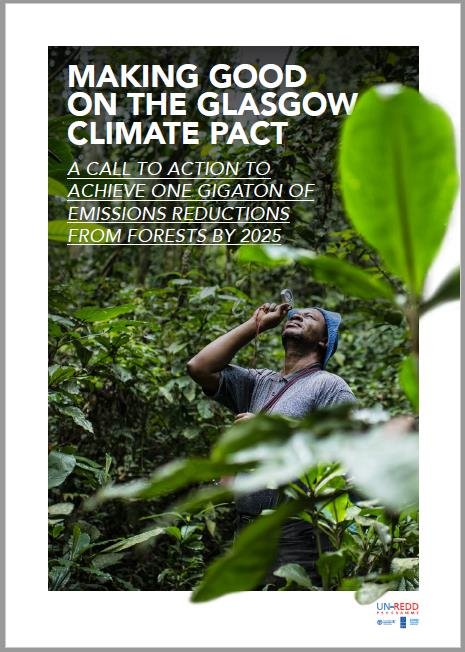 Read this article in French
Read this article in French- Share this article
- Subscribe to our newsletter
Emission reductions from forests
The world is not on track to achieve forest goals of ending and reversing deforestation by 2030, critical for a credible pathway to the 1.5°C Paris Agreement target, according to the report Making good on the Glasgow Climate Pact: a call to action to achieve one gigaton of emissions reductions from forests by 2025. The report was published by the UN-REDD Programme, the UN Environment Programme World Conservation Monitoring Centre (UNEP-WCMC) and the Green Gigaton Challenge (GGC) in November 2022.
It finds that for the 2030 goals to remain within reach, a one-gigaton milestone of emissions reductions from forests must be achieved not later than 2025, and yearly after that. Current public and private commitments to pay for emissions reductions are at a mere 24 per cent of the gigaton milestone goal. Only around half of these commitments have been realised through signed emissions reduction purchase agreements, and none of the funding for these commitments has yet been disbursed.
The report outlines that an unmistakable signal in the form of a carbon price of USD 30-50 per ton of CO2e (equivalent of CO2) for forest emissions reductions is needed to provide the incentives, means and predictability required for countries to invest in the protection of their forests. Such a price would combine a donor-funded floor price with private sector demand for high-integrity emission reductions above that price.
Integrity is key to ensuring the real, robust emissions reductions needed to achieve the gigaton milestone. The report also reviews the potential contribution of the voluntary carbon market in scaling up emissions reductions from forests, which becomes more important as growth of the market accelerates, having quadrupled in value between 2020 and 2021. Its success will depend on alignment with the United Nations Framework Convention on Climate Change decisions on REDD+, as well as having robust quantification mechanisms to deal with reversals and leakage, and strong adherence to safeguards.
The report also highlights how high-forest low-deforestation (HFLD) countries need more financial support. HFLD countries store 18 per cent of tropical forest carbon world-wide. But current forest climate finance mechanisms are not adequate for rewarding their historical conservation and resisting increasing pressures to deforest. It is vital that their access to sufficient climate finance is rapidly improved.
For a 66 per cent chance of limiting global warming to no more than 2°C, 15 gigatons of emissions per year by 2030 must be avoided or absorbed, above the commitments already made by countries. Forest-based solutions provide a crucial annual mitigation potential of around 4 gigatons by 2030. Actions to halt forest loss and degradation, coupled with sustainable forest management, conservation and restoration can deliver cost-effective climate mitigation for 27 per cent of the solution to help avert climate catastrophe.
(UNEP/ile)
Read more and download the report on the UNEP website





Add a comment
Be the First to Comment